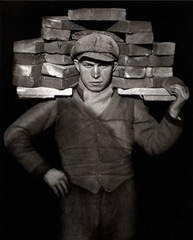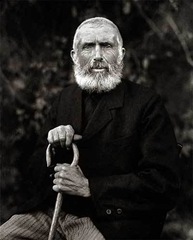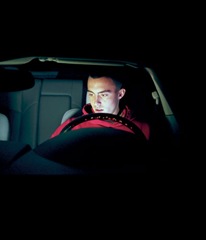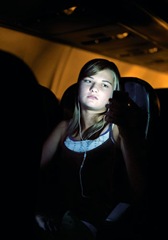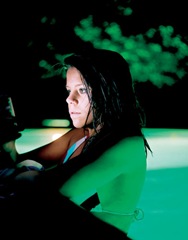Sunday 31 January 2010
USING THE WIRELESS FLASH INDOORS AND OUT
ERIC O'CONNELL
JASON HYNES
TREVOR APPLESON – FREE GROUND
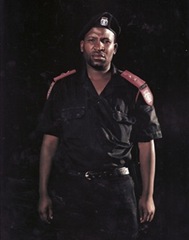 | ![clip_image001[5] clip_image001[5]](http://lh4.ggpht.com/-RVh9G_uQh0k/T5GNGstk7WI/AAAAAAAAGuo/tQD60WVxp4Y/clip_image001%25255B5%25255D%25255B3%25255D.jpg?imgmax=800) |
![clip_image001[7] clip_image001[7]](https://blogger.googleusercontent.com/img/b/R29vZ2xl/AVvXsEj9Ca-5tcENbfRcsXQYuDGSaFj1XstWGxojpQiEfmZJSqnFo7Yc-nHTWYCIvAJTK-CH6RM3Td0Dy6HOt8CrdJ_IXgDQBzCx9vTpaK7URPbt-mDwTp8_XMHf9IQQtWKeDYi8rjjPxNwUPT3L/?imgmax=800) | ![clip_image001[9] clip_image001[9]](https://blogger.googleusercontent.com/img/b/R29vZ2xl/AVvXsEjqQsvKlTlJ5Ew1D8Uhy6qzP6vucyvlTZvN5c7cOZOV8NXmW-MZHZC2JoeHNt_JK5LtTZLaLJCJYLEUUURnTsHWoh3hAb2zFgciQlT-Yh1ic3rgHRY3XGnFeLAuKfwN_oFWRawtUmRHCcHC/?imgmax=800) |
![clip_image001[11] clip_image001[11]](http://lh3.ggpht.com/-KytzsrnZ1Ig/T5GNJoB7cdI/AAAAAAAAGu8/oN65c7eVzaY/clip_image001%25255B11%25255D%25255B3%25255D.jpg?imgmax=800) | ![clip_image001[13] clip_image001[13]](http://lh5.ggpht.com/-jvLUdE6BwKQ/T5GNKXKmI8I/AAAAAAAAGvE/fO1oN5U1-zA/clip_image001%25255B13%25255D%25255B3%25255D.jpg?imgmax=800) |
![clip_image001[15] clip_image001[15]](http://lh3.ggpht.com/-YfYbh-2SKu0/T5GNLL9dlEI/AAAAAAAAGvM/dEvEBGNRnCA/clip_image001%25255B15%25255D%25255B3%25255D.jpg?imgmax=800) | 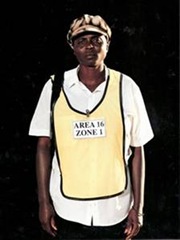 |
![clip_image002[5] clip_image002[5]](https://blogger.googleusercontent.com/img/b/R29vZ2xl/AVvXsEjIBd5mcg1LHDXve6xg_2oXU9A1bhEmvt1fIsjmehgeh-Gv4PXuEIamB3HdgtaOXaPuM5cf_lSd0W1rkwQrlu0-uZl8QqFk9Ft2vGRDmMczDAFUKcddPIxJ2fyYEVjNcVEx8hnnZc6IdljG/?imgmax=800) | ![clip_image002[7] clip_image002[7]](http://lh5.ggpht.com/-0GHYWwXgmqk/T5GNNi453_I/AAAAAAAAGvo/7ouczdU834M/clip_image002%25255B7%25255D%25255B3%25255D.jpg?imgmax=800) |
![clip_image001[17] clip_image001[17]](https://blogger.googleusercontent.com/img/b/R29vZ2xl/AVvXsEgEoOcMo_dfaqspDwwIEMgC3TltU2jPh7gUeQMulhZEAPGAlsCKQN_hbnqtm5UmOffEvUtuc-0ia7r2VBDHctmE9GoKvnmxFsEC_Vi4VTTyHRQ3CjYeALBRldBWJCkbrX0nmQYKan0WAdBc/?imgmax=800) | ![clip_image001[19] clip_image001[19]](http://lh5.ggpht.com/-s-wTgGWUpF4/T5GNPUPm9XI/AAAAAAAAGv4/57pMmwC7QMk/clip_image001%25255B19%25255D%25255B3%25255D.jpg?imgmax=800) |
Tuesday 26 January 2010
GLENN BUSCH – WORKING MEN
Glenn Busch’s book ‘Working Men’, featured portraits of male workers in New Zealand in the 1980s. As you can see, his style is exactly like mine. I think these types of images work better in colour as it would give more of a sense of the workplace. I feel that black and white ‘dampens down’ the reality and gives the images a ‘bleakness’.
 | 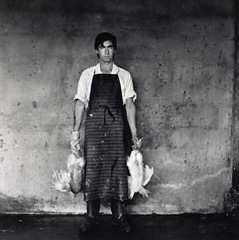 |
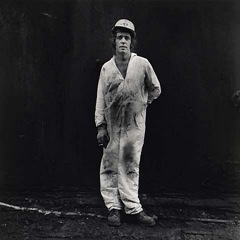 | 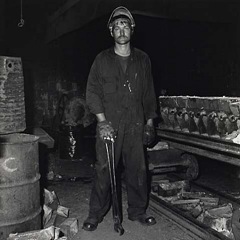 |
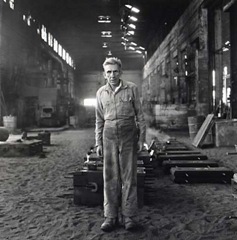 |  |
 | 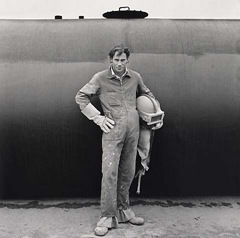 |
There are no women pictured in this book - I would like to get a good balance of men and women in my work, but it all depends who agrees to be photographed. Busch photographed only manual workers, which is a male-dominated area.
Sheridan Keith in his review of Busch’s book feels it was a pity that for comparison there are no car salesmen, retailers, lawyers, accountants or MP's weren’t included and that it would have been “interesting to see if the common themes that emerge in Busch's group were consistent throughout a wider range of wage earners.”
I like the way Busch has captioned his pictures, ie Jack Taylor, Boat Builder and John Dale, Labourer, Demolition Gang. This is similar to how I am thinking of captioning my pictures. However, I may omit the workers names as they are representative of all workers in their particular field and feel it may be uncessary naming them as individuals.
AUGUST SANDER
SHAUN WAUGH - 'ME37 NIGHTSHIFT FREEZING WORKERS'
Shaun Waugh
ME37 Nightshift Freezing Workers by Shaun Waugh was a billboard project, featuring 54 portraits of individuals employed at the Belfast freezing works, the images explores photography’s uneasy position between subjective and objective modes of representation.
This is what I am trying to do with the people I photograph.
Each worker is photographed in their overalls and white gum boots against a relatively blank background of insulation panelling and concrete flooring. There are no overt props, just the odd pair of plastic gloves, ear-muffs or a hair net.
 These photographs play with the conventions of traditional portraiture and the social documentary image, whilst also referencing recent trends in contemporary photography.
These photographs play with the conventions of traditional portraiture and the social documentary image, whilst also referencing recent trends in contemporary photography.
 Waugh’s images reflect upon what it is to see and be seen; what it is to be subject and viewer. In an attempt to minimize his presence as photographer, he offered only minimal direction to those who stood before his lens; participants were simply asked to stand facing the camera. Of more importance to Waugh is that his subjects respond to the camera in as raw and intuitive a way as possible. Within the highly structured composition of each image, then, he offers his subjects a certain freedom of expression. Yet it is interesting to see how each individual continues to respond to the camera according to an established set of conventions; although each slightly different, the poses we see here are certainly familiar stances within the realm of the photographic portrait.
Waugh’s images reflect upon what it is to see and be seen; what it is to be subject and viewer. In an attempt to minimize his presence as photographer, he offered only minimal direction to those who stood before his lens; participants were simply asked to stand facing the camera. Of more importance to Waugh is that his subjects respond to the camera in as raw and intuitive a way as possible. Within the highly structured composition of each image, then, he offers his subjects a certain freedom of expression. Yet it is interesting to see how each individual continues to respond to the camera according to an established set of conventions; although each slightly different, the poses we see here are certainly familiar stances within the realm of the photographic portrait.
Text taken from: http://www.coca.org.nz/exhibitions/60/
Tuesday 19 January 2010
HOW TO LIGHT PEOPLE
The BJP this week has a feature on how best to light people, cars, paper and animals:
http://www.bjp-online.com/public/showPage.html?page=872565
Below is an extract and is copyright BJP.
They say that flash is often the only way to achieve a certain look, feel, or level of control, but that doesn't mean the results have to look uniform. Portrait photographer Richard Ansett says his flash technique is what separates his work from documentary photography, for example, while Satoshi Minakawa uses innovative lighting to add a daring twist to his car shots, and in William Selden's hands lighting helps create subtle yet sophisticated fashion and advertising. These four photographers use flash in highly idiosyncratic ways, defining their styles and achieving their distinctive looks.
Richard Ansett
 Richard Ansett is known for his social-documentary approach to commercial work but says his style is defined by 'deliberate use' of flash lighting.
Richard Ansett is known for his social-documentary approach to commercial work but says his style is defined by 'deliberate use' of flash lighting.
Ansett always carefully manages his light. 'I almost entirely direct a light right-to-left, and use a single soft box,' he says, and adds that he also likes to 'feather-light' his subjects, direct light from a single soft box to just miss the subject. It gives a softer, more natural feel to pictures, and also casts more light onto floors and backgrounds. 'A direct soft box means a lot o![clip_image002[5] clip_image002[5]](http://lh4.ggpht.com/-Aelio39ilIw/T5GR8c5pdqI/AAAAAAAAGzI/pTZn4RmgeEo/clip_image002%25255B5%25255D%25255B3%25255D.jpg?imgmax=800) f light on skin but not much elsewhere,' he explains. 'We've got the flash mounted on a shopping trolley, which means I can direct my assistant to make these minute adjustments until I get it right.'
f light on skin but not much elsewhere,' he explains. 'We've got the flash mounted on a shopping trolley, which means I can direct my assistant to make these minute adjustments until I get it right.'
William Selden
 For the Jarvis Cocker portrait shown, William Selden put the lights up high to mimic midday sunlight. 'I hate low-angle lighting that tries to recreate evening light,' he says. 'For this shot, I may have half-closed a brolly to soften things up, but I like to avoid fill (flash). I altered the shadows in Photoshop to achieve a softer look.'
For the Jarvis Cocker portrait shown, William Selden put the lights up high to mimic midday sunlight. 'I hate low-angle lighting that tries to recreate evening light,' he says. 'For this shot, I may have half-closed a brolly to soften things up, but I like to avoid fill (flash). I altered the shadows in Photoshop to achieve a softer look.'
He's a big fan of digital capture, which he believes has enabled his lighting style. 'Photography's changed so much in the last 15 years, everyone's huddled around a monitor (on shoots) now,' he says. 'It's more collaborative. There must have been more photos taken in the last 10 years than in the 150 years before, thanks to digital. And I suppose that deadlines are set for digital nowadays -clients want things next-day, the benchmark's for digital.'
Sunday 17 January 2010
EVAN BADEN – THE ILLUMINATI
SIRKKA-LIISA KONTTINEN – BYKER REVISITED
Sirkka-Liisa Konttinen photographed Byker in Newcastle in 1984. She returned in 2004 to photograph it again. It is the style of the 2004 photographs that I like best. The use of colour gives a kind of ‘rawness’ to the pictures, they seem more real to me. Like the images of Brascher and Fischer, the images have the quality of a painting.
 | 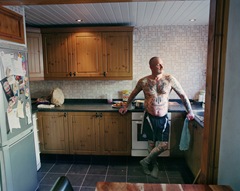 |
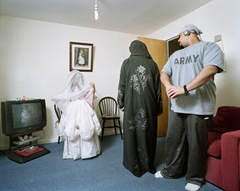 |  |





![clip_image002[5] clip_image002[5]](http://lh5.ggpht.com/-J3ULwR11Hy4/T5GLnZcyZmI/AAAAAAAAGtg/We2m0Ng0DIQ/clip_image002%25255B5%25255D%25255B3%25255D.jpg?imgmax=800)
![clip_image002[7] clip_image002[7]](http://lh5.ggpht.com/-cu-f1bR_Ov8/T5GLobieZRI/AAAAAAAAGto/Q4eBIWroSk8/clip_image002%25255B7%25255D%25255B3%25255D.jpg?imgmax=800)
![clip_image002[9] clip_image002[9]](https://blogger.googleusercontent.com/img/b/R29vZ2xl/AVvXsEhoWHF4MleGAif9MCWQ7qPHj_nttLbWK5lGiExV9EuPrU92An50nnX27M9rWav2d1P_-5p4tm27AZcz_H7h32LG3XdNI57UtaTVNi18HIE44Z8TAx1k81kdYm_5hZ66l2OknJDiiMKmJ165/?imgmax=800)
![clip_image002[11] clip_image002[11]](http://lh4.ggpht.com/-hWaKAc2yrhg/T5GLp-P_DbI/AAAAAAAAGt4/ikqmVuCBk8Q/clip_image002%25255B11%25255D%25255B3%25255D.jpg?imgmax=800)

![clip_image001[4] clip_image001[4]](http://lh3.ggpht.com/-6cHI2Gsq1cQ/T5GMcmOzDSI/AAAAAAAAGuE/oBC7JGNNqNc/clip_image001%25255B4%25255D%25255B3%25255D.jpg?imgmax=800)
![clip_image001[6] clip_image001[6]](http://lh4.ggpht.com/-yUwhyokGsaI/T5GMdSF1ycI/AAAAAAAAGuQ/62noaloX-lI/clip_image001%25255B6%25255D%25255B3%25255D.jpg?imgmax=800)
![clip_image001[8] clip_image001[8]](https://blogger.googleusercontent.com/img/b/R29vZ2xl/AVvXsEgfOKxIMAUcoAbVv8XLglwwDNfgTWcbY5MPJF06b8NZVHLpsk_WRjnrB0xziYheB_Ap9ANZ07amH7WZnVqCv7BZP1vx__TnxmZKkWiRPoFb-mmxhxAyAx9Z5lptYBTHsdC7KidbAf1Rfe2H/?imgmax=800)

